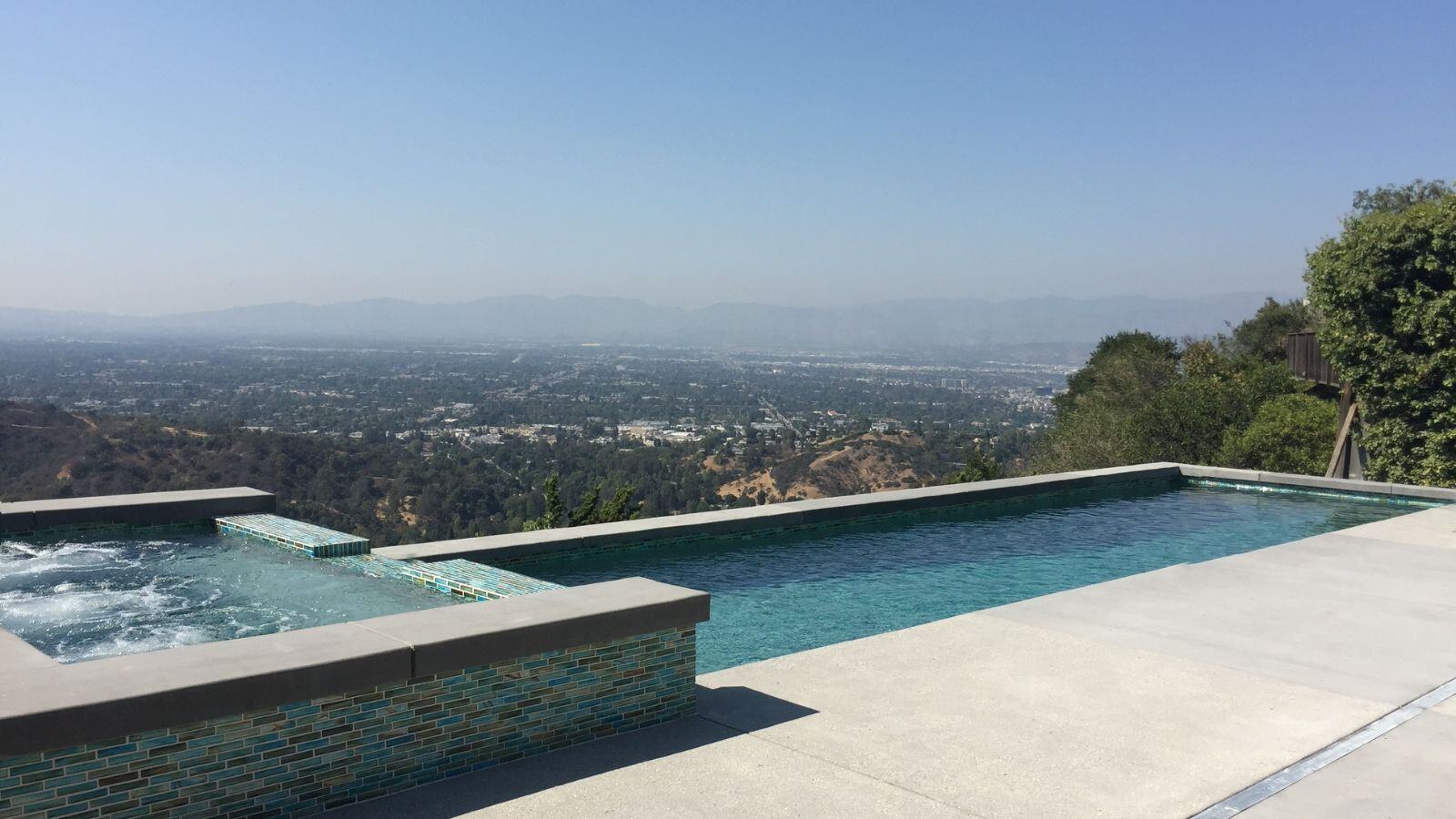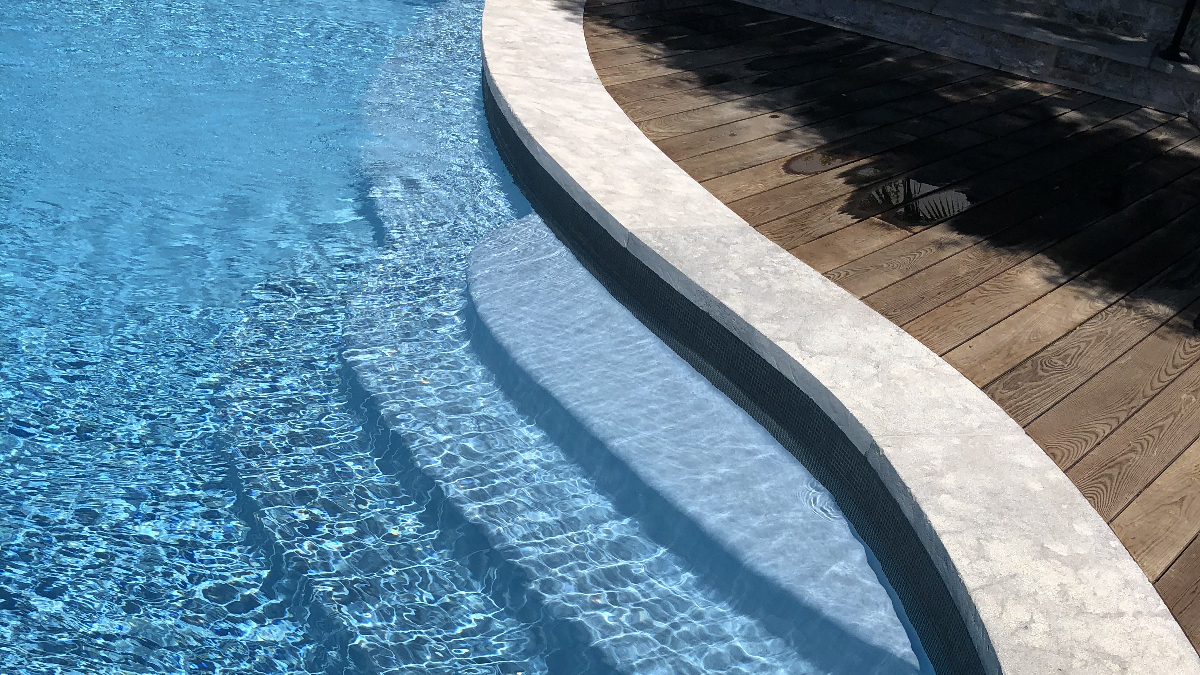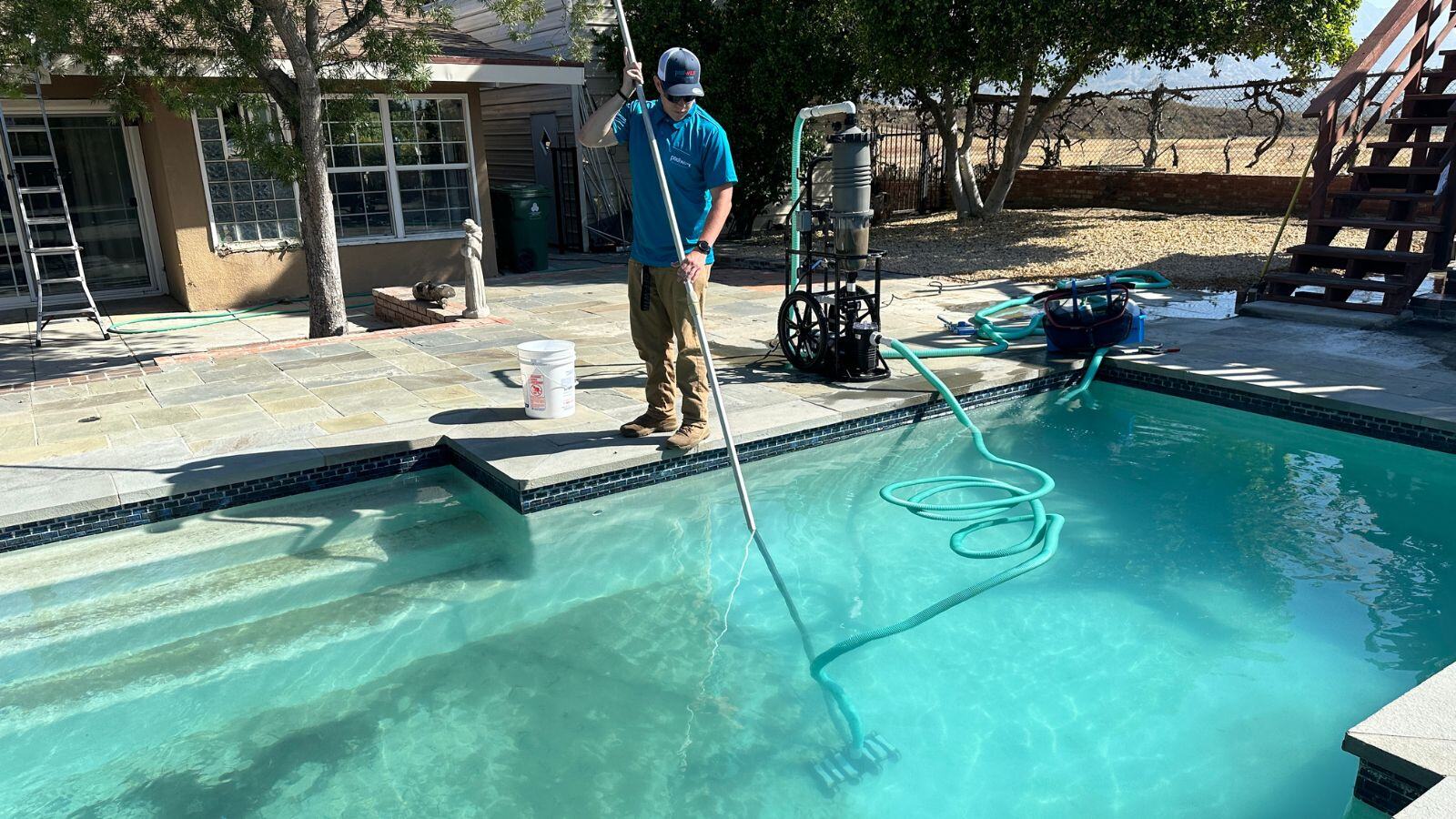Pool Coping, Best Materials, Installation Standards, Costs & What to Avoid
Why Pool Coping Fails - How to Avoid Expensive Repairs If you’re planning a new pool or renovating an older one, it’s completely normal to feel...

Constructing a swimming pool in Los Angeles's hillside areas involves more than design aesthetics. Strict regulations from the City of Los Angeles and LA County are in place to ensure safety, slope stability, and neighborhood compatibility. These hillside-specific requirements address setbacks, grading, erosion control, and drainage. Let’s break them down with a focus on pool-related construction.
.jpg?width=230&height=306&name=Hillside%20Vertical%20Blog%20Visual%20(1).jpg)
The H/4 rule is a zoning formula determining how close a structure can be to the bottom of an ascending slope. While it is often associated with buildings, it also applies to freestanding structures like pool walls, retaining walls, or the pool shell itself.
H/4 Defined: Take the slope height directly uphill from your construction site (H), and divide that number by 4. The result is the minimum setback distance required from the base of the slope to the bottom or your pool or pool structure.
Example: If the slope is 20 feet tall, divide by 4. That means your pool must be placed at least 5 feet away from the base of that slope.
This rule helps maintain slope stability and ensures your pool structure isn’t at risk of being undermined or putting too much load on a hillside.
ProTip: In a hillside condition a Soils study is required to provide engineering and slope stability recommendations depending on the type of soil that is encountered in your backyard.

Front Yards: Pools are generally not allowed in the required front yard setback area due to the Hillside Ordinance (City of LA, specifically). Certain exceptions are permitted when the front yard is far away from the street and out of sight.
Side and Rear Yards: While the LADBS does not state a universal rule, a minimum 5-foot setback from property lines for the pool shell and equipment is a common requirement. This could be increased depending on the slope, access, or neighboring properties in hillside zones.
Always check with the Los Angeles Grading Department or the local Planning Department to confirm your parcel's exact side/rear setback distances, as these may be updated without notice to the public.
.jpg?width=524&height=393&name=Hillside%20Horizontal%20Blog%20Visual%20(5).jpg)
If you are building a pool near the top of a descending slope, the setback required is H/6 (the slope's height divided by 6). This means the Pool structure must be set back a distance equal to one-sixth of the slope's height, with a maximum setback limit of 20 feet. This rule helps prevent instability and potential damage from landslides or other slope-related issues.
Daylight Plane for Pools
.jpg?width=201&height=151&name=Hillside%20Horizontal%20Blog%20Visual%20(3).jpg) In hillside areas, the daylight plane is an imaginary, angled surface starting from the property line and angling inward over the lot. Though commonly applied to buildings, pool-related structures such as equipment enclosures or pool cabanas must also stay within this plane to preserve views, air, and light for neighboring homes.
In hillside areas, the daylight plane is an imaginary, angled surface starting from the property line and angling inward over the lot. Though commonly applied to buildings, pool-related structures such as equipment enclosures or pool cabanas must also stay within this plane to preserve views, air, and light for neighboring homes.

Grading in hillside zones is tightly regulated. Excavating or filling more than 50 cubic yards often requires a permit, and anything over 1,000 cubic yards may require additional engineering and soil reports. Not to mention the substantial costs related to these mega projects.
If soil is exported off-site, it may be subject to haul route approvals, especially in sensitive hillside neighborhoods that require additional permits for the waste haulers.
Pro Tip: A Grading Pre Inspection or GPI is often a pre requisite in order to obtain a hillside permit. This document enlist all the requirements the Grading Department will require for that particular construction site that will need to be included in the permit submittal.
.jpg?width=312&height=234&name=Hillside%20Horizontal%20Blog%20Visual%20(2).jpg)
Erosion Control: When digging into a hillside to install a pool, it’s crucial to implement erosion control methods, such as fiber rolls, silt fences, or hydroseeding, to prevent soil displacement.
Drainage: Proper slope drainage must be integrated into your pool design to ensure optimal performance. Overflows, backwash lines, and yard drains should connect to approved drainage systems or stormwater treatment, not just spill down the hillside.
.jpg?width=170&height=227&name=Hillside%20Vertical%20Blog%20Visual%20(2).jpg)
Retaining Walls: In Los Angeles, a retaining wall taller than 4 feet (measured from the bottom of the footing) typically requires a permit and the services of a licensed engineer. Even short walls may require sign-off in hillside zones.
Deep Foundations: Hillside pools often require caissons or grade beams to anchor the structure into stable soil. These must be engineered and permitted.
.jpg?width=423&height=317&name=Hillside%20Horizontal%20Blog%20Visual%20(1).jpg)
Building a pool on a hillside property in LA or LA County is rewarding but highly technical. Understanding rules like the H/4 and H/6 setbacks, daylight plane limits, and grading thresholds ensures your project is compliant and safe. Partnering with an experienced, hillside-savvy pool builder will make navigating these complexities easier.
If you're considering building a pool on a slope, contact us today—we're here to help you turn challenging terrain into a backyard oasis.

Why Pool Coping Fails - How to Avoid Expensive Repairs If you’re planning a new pool or renovating an older one, it’s completely normal to feel...

Have you ever wondered why your pool company talks about “certified technicians”? Or why does Los Angeles County require strict training and testing...

Is hiring a pool service company really worth it, or just another monthly expense?